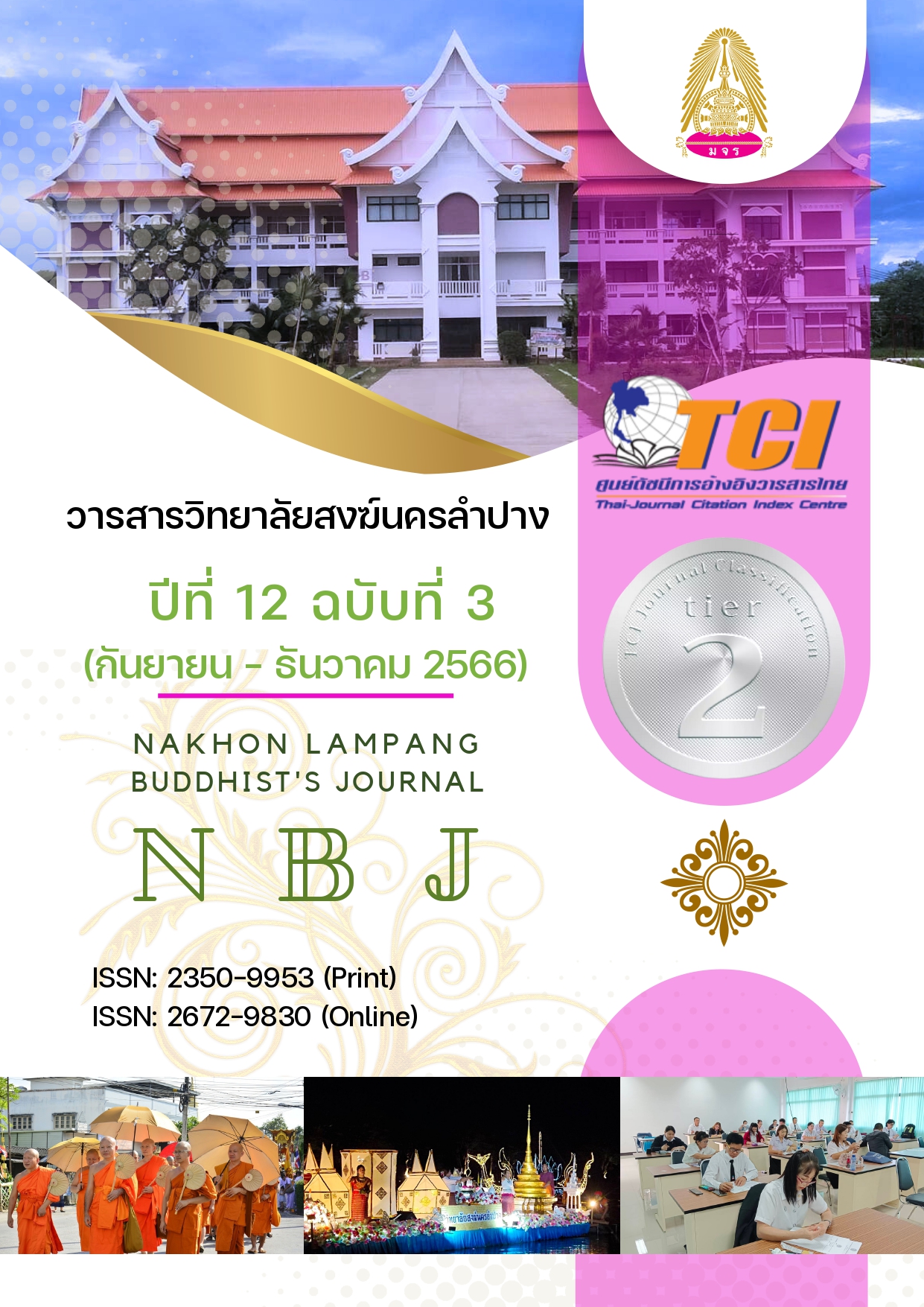A MODEL FOR CREATING A NETWORK OF BUDDHIST AGRICULTURAL DEVELOPMENT AND SAFE PRODUCT MANUFACTURING PROCESSES FOR COMMUNITY-BASED ECONOMIC DEVELOPMENT IN PHETCHABURI PROVINCE
Main Article Content
Abstract
Research on the technique of making safe products and the concept for building a Buddhist agricultural development network to support the local economies of Phetchaburi Province. Ten participants in-depth interviews are part of this mixed-methods study. In this training utilizing descriptive data analysis, fifteen participants participated part.
The results of the research revealed that:
1.The Organic Agriculture Community EnterpriseCenter's synthesis of the Buddhist agriculture model Agriculture is the practice of planting groups of plants using a plant system, such as planting perennials in the west and vegetable gardens in the east for sunlight; planting crops with insect pests like lemongrass, hemp, marigold, and papaya; avoiding the use of chemical insecticides in agriculture; using natural fertilizers; minimizing weed burning; and not inflicting harm on neighbors, animals, the environment, or nature. The Buddhist practice of not using chemicals on grown or sold vegetables is an example of being honest with oneself and others.
2. A development plan for setting up a network of businesses that produce secure Buddhist goods. The following elements of organic agriculture are analyzed using a Buddhist lens: 1) assets; 2) educational institutions; 3) regional thinkers; 4) tangible assets; 5) leaders; 6) adherents; and 7) organic produce. Opportunities, community networks, community tourism, product transformation, and cultural homestays are some examples of supporting networks.
The objectives are as follows: 1) mental and physical well-being; 2) growth of spatial agriculture; 3) construction of a Buddhist way network; 4) Buddhist organic market; and 5) integrated market. Among the outcomes are: 1) sustainability of the environment; 2) social sustainability; 3) economic sustainability; 4) sound financial management; 5) good health; 6) community income; 7) fostering community cohesion; and 8) Establishing "Bawon" network partners.
3.The following components make up the model for building a network to advance Buddhist agriculture and the safe product manufacturing process: Monks, village chief, and village headmen are examples of community leaders who should take the lead in arranging learning activities that meet the needs of target groups like children, youth, agricultural entrepreneurs, students, academics, agencies, and agricultural centers in order to create systematic learning. The significance of networks where information can be shared while engaging in a variety of activities is appreciated by the participants.
The concept of organic agriculture emphasizes that safe vegetable consumption should begin in the extended family and spread throughout the community, society, and community. It may lead to a change in the manner in which that people consume organic vegetables.
Article Details

This work is licensed under a Creative Commons Attribution-NonCommercial-NoDerivatives 4.0 International License.
References
Anusornpanitchakul, T. et al. (2018). Model of successful community enterprises in Thailand. Phetchabun Rajabhat Journal, 20(1), 8-17.
Bunraeng, P. & Yamontri, A. (2007). Organic agriculture: theory and applications for farmers. Chiang Mai: Good Printing Limited Partnership.
Mahachulalongkornrajavidyalaya University. (1996). Thai Tripitaka. Bangkok: Mahachu lalongkornrajavidyalaya Printing House.
Ministry of Commerce. (2017). National Organic Agriculture Development Strategy 2017 – 2021. Bangkok: Ministry of Commerce.
Office of Agricultural Economics. (2015). Quantity and value of agricultural hazardous substances 2010-2015. Bangkok: Office of Agricultural Economics.
Phra Thep Rattanamuni (Saipong Anompanyo), K. et al. (2016). Buddhist agriculture to solve community economic problems. Cho Payom Journal, 25(1), 53-64.
Phraraj woramuni (Phon Aphakaro) et al. (2015). Integrated Buddhist ecology for sustainable development in enhancing the health and learning of Thai society. Journal of Social Sciences and Humanities, 41(2), 32-48.
Supapunt, P. et al. (2017). Appropriate marketing strategies for organic agricultural product distribution channels in Chiang Mai Province. Parichat Journal Thaksin University, (Special Issue), 35-44.
